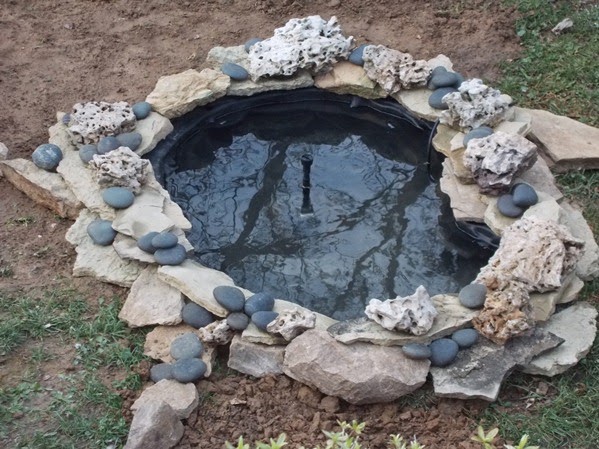Suprise! I have a guest post for you today,
I think you will like it :-)
How to soothe joint pain after running
Millions of us love running or jogging as a form of exercise or competitive sport. But whether you are a leisurely jogger or professional athlete, it’s likely that at some point you will experience the agony of joint pain, particularly around the knees. Understanding the causes and taking preventative action can help minimise joint pain and reduce the likelihood of sustaining a serious injury:
Prevention, not cure!
There are several things that you can do which will reduce the likelihood of injuring yourself or getting joint pain to begin with. Make sure that you warm up before you run, and cool down afterwards. Many people skip the cool down, not realising that it is just as important as the warm up. It helps the body to recover, ensuring maximum flexibility, relaxing the muscles and returning them to their resting length.
When you’re out running, stick to softer surfaces such as grass rather than concrete, and always wear supportive running shoes that are suitable for your foot and gait. Consult a specialist to see whether arch supports might be needed for your shoes, particularly if you have flat feet. Shoes should be replaced regularly too – every 300 to 350 miles is recommended.
Ensure you build strength and flexibility in all of your leg muscles – otherwise you can put pressure on your knees which may lead to misalignment problems. In between your running sessions, make sure you give your body adequate rest, allowing your joints and muscles time to repair from your training.
What can go wrong
Despite taking every precaution, sometimes you will find yourself injured or in pain, and often this will be in your knees. The knees contain many ligaments that work to stabilise the joints, and running can cause the ligaments to twist, tear or over-stretch which is what results in pain. This is often accompanied by swelling and a feeling like the knee is going to give way. Unsurprisingly, these symptoms are sometimes referred to as ‘runner’s knee’!
Damage to cartilage which helps protect and cushion joints is also a frequent cause of pain. This spongy material keeps the bones from touching each other as well as helping to absorb shock and distribute weight evenly. Cartilage damage can take a long time to heal and if you do continue running on the injury, you can incur further damage both to the cartilage and to the ligaments.
Tendons can also be the cause of joint pain – these white elastic fibrous cords cross and attach close to the knee joint and these can tear from repetitive overuse or from stretching the muscles suddenly and rapidly. Even a partial tear of a tendon takes between two and eight weeks to heal properly.
Dealing with joint pain
If you find yourself in pain after running, there are various things steps you can take to alleviate the discomfort. You need to rest and initially try to keep movement to a minimum, avoiding putting weight on the affected joint. Although anti-inflammatory painkillers like ibuprofen are usually helpful, don’t be tempted to stop resting if they take the pain away.
During the first 2-3 days, avoid massaging the area or applying heat. If it is an underlying muscle injury causing the pain, you will end up sending more blood flow to the area which will actually prevent the muscle from healing. Instead, it is advisable to apply ice to the area and change your ice pack regularly to help reduce the pain and lessen the swelling. A compression wrap may also be helpful. You should elevate the affected joint using a pillow to reduce strain and help keep swelling to a minimum. After 2-3 days your doctor will likely recommend gentle exercises to help regain the strength in the joint and to keep it flexible.
Taking supplements
Many runners who suffer with joint pain recommend glucosamine, a substance that occurs naturally in the body but can be bought as a supplement which is made from the exo-skeleton of shellfish.
Glucosamine is thought to help prevent cartilage in the joints from wearing away, and to promote healing. In a survey carried out by runnersworld.com, 94.5 percent of respondents said they had tried glucosamine and/or chondroitin, another substance commonly taken with the supplement. 79.8 percent of the respondents reported their symptoms to have "somewhat improved" or "greatly improved" following taking the supplements, with less than 1 percent saying that "things got worse". Trying glucosamine supplements when you are experiencing joint pain from running therefore seems like a no-brainer.
Allowing yourself time to heal
If you do experience joint pain following a run, it cannot be stressed enough that you need to give yourself time to heal – you should never run through the pain or try to mask it with painkillers. Pain is a message telling you to stop and rest, and running on an injury can cause long term damage.
Before taking any new supplements, it is recommended that you consult with your doctor or healthcare professional to ensure that they are right for you. If you should injure yourself during a running session, always seek professional medical advice.
///\\\///\\\///\\\///\\\/// BIO \\\///\\\///\\\///\\\///\\\
This article was written by Carly, a freelance writer from the UK. Carly is really into running and has recently started training for her first competitive race! She’s booked onto a fun “colour run” later this spring! When not writing, Carly enjoys walking her two dogs in the countryside and is working her way through season four of 24 -- shhhh! No spoilers please!
///\\\///\\\///\\\///\\\/// IMAGE CREDITS \\\///\\\///\\\///\\\///\\\
Image of jogger © Public Domain via MorgueFile, contributed by fitwalk















































